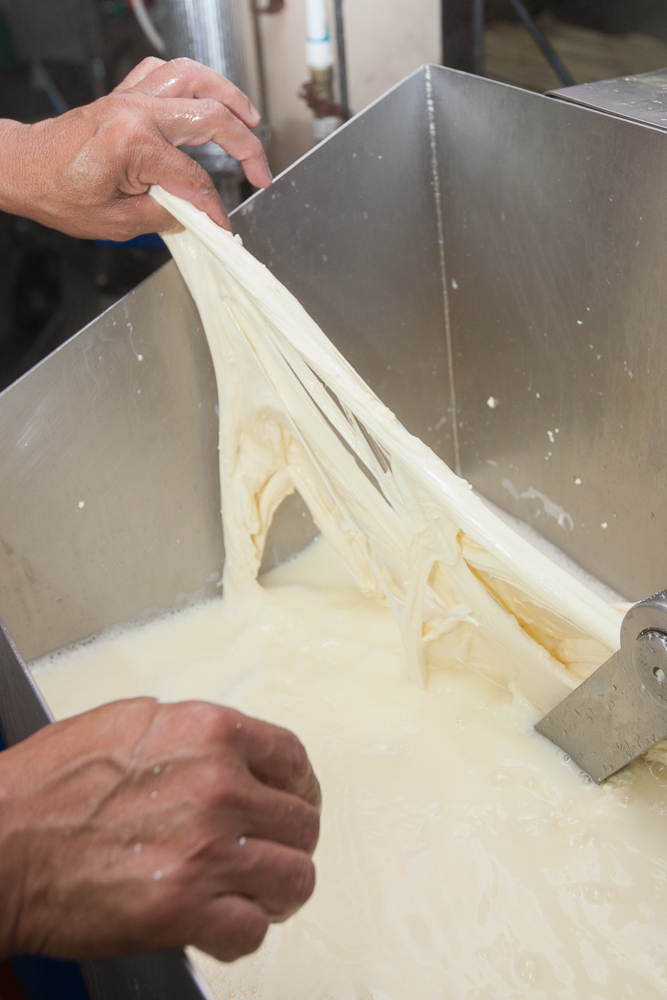
“This machine that our hands are, is the only one that can do the job well,” said Reynaldo Villalobos, referring to the production of palmito cheese, known as the best cheese in Costa Rica.
Palmito is a traditional cheese that could be compared to mozzarella, but its flavor is a bit more bitter and its texture is like a stringy (fibrous) pasta. Cheese can only be produced by hand because human hands are required to acquire the correct texture.
“It is a cheese that demands a lot of work,” said Villalobos, production manager of Don Beto Cheese. “When the cheese is being stretched, you pass your hand and you feel if it needs to be stretched more if it is soft or hard,” Villalobos added that producing Palmito cheese is complicated, especially when it comes to the pH of the milk, which cannot be too high or too low. It has to be the ideal pH.
Over the years, Quesos Don Beto has added some machines to improve the production of Palmito cheese and other cheeses. For example, a pH meter. But the preparation of Palmito cheese – which is originally from Zarcero and the San Carlos area – is still considered artisanal.
Eating the cheese is also an experience to dip into, as the ball-shaped delicacy must be unwrapped piece by piece.
You can find the cheese produced by Don Beto Cheese at any Auto Mercado, Muños y Nane, and Plaza Cristal in Curridabat. Or if you want to do it the traditional way, you can stop at any stretch, or small street-side shop in the mountainous north, and buy a ball of cheese.
___
A previous version of this piece was published in Nature Landings, the in-flight magazine of Nature Air.





